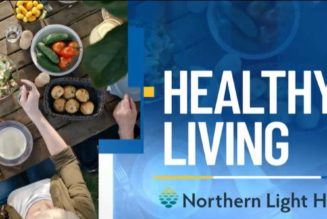
1. Eat protein, fat, and vegetables
Aim to include a variety of foods at each meal. To balance your plate, your meals should include protein, fat, vegetables, and complex carbohydrates.
The following are the recommended amounts you should eat by age according to the
Protein
Eating a recommended amount of protein is essential to help preserve muscle mass while losing weight.
Diets with adequate protein may also
The following are examples of foods that contain protein with amounts and servings from the
Vegetables
All vegetables can be nutrient-rich additions to your diet. Aim to eat about
Examples of vegetables include:
- leafy greens
- tomatoes
- bell peppers
- green beans
- squash
If you are deciding what foods you should eat, note that certain vegetables — like potatoes, sweet potatoes, and corn — are considered carbs or grains when on the plate because they’re higher in carbs and calories. Be mindful of your portion sizes when adding these vegetables to your plate.
Healthy fats
Healthy fats like olive oil, avocado, nuts, and seeds are great choices for your eating plan.
Note that oils are composed of 100% healthy fats. Although some, like olive oil, are considered healthy, they also provide 9 calories per gram, compared to protein and carbs, which provide only 4 calories per gram.
For this reason, it’s important to eat healthy fats in moderation and limit saturated and trans-saturated fats.
The following are examples of other foods that contain healthy fats:
Butter and coconut oil should be enjoyed
Summary
Try to assemble each meal with a protein source, healthy fat source, complex carb, and vegetables.
2. Move your body
The
Cardio workouts include things such as walking, jogging, running, cycling, or swimming. Learn more about types of weight training exercises.
Be sure to talk with a doctor before starting a new exercise plan.
Summary
A combination of aerobic and weight training are good for your health. While each type of exercise is good on its own, together they are better at helping you lose weight.
3. Eat more fiber
Fiber moves slowly through the digestive tract and can help you
It might also stabilize blood sugar levels, promote regularity, and protect against certain chronic conditions.
Food groups like grains and fruit that contain a lot of fiber include fruits, vegetables, whole grains, breads, and legumes. Aim to eat
The following are examples of foods that contain fiber with their recommended daily servings:
Summary
Increasing your intake of fiber-rich foods could promote weight loss and support overall health.
4. Eat mindfully
Having a good understanding of how your body responds to food and eating can help you make sure you’re not overeating. This is known as mindful eating. It can involve the following:
- eating more slowly
- learning to recognize when you’re hungry vs. when you’re craving food for emotional reasons
- cooking colorful foods with a variety of textures to prolong and enjoy your meals
The reason eating quickly can be problematic is that it doesn’t allow your brain to register consciously when you’re full.
Eating slowly gives your stomach more time to tell your brain you’re full, which helps you learn to distinguish the feeling of genuine hunger vs. fullness. This
Try minimizing distractions while you eat and follow these strategies for mindful eating to slow down during your meals. Learn more about mindful eating and weight loss.
Summary
Practicing mindful eating can help you feel more full and avoid overeating.
5. Stay hydrated
Drinking plenty of water can help promote weight loss by
It might also work by
Be sure to choose water or other low-calorie drinks rather than sugar-sweetened beverages like soda, which are high in sugar and calories and
Other benefits from drinking water related to weight loss include helping you stay hydrated while you exercise and helping remove waste from the body. In general, drinking water helps your body run more efficiently.
Summary
Drinking water or other low-calorie beverages can reduce food intake and boost fat burning.
6. Get plenty of sleep
In addition to changing your diet and exercise routine, getting enough sleep each night may be beneficial for weight loss.
One study found that people who regularly sleep less than 7 hours per night are
Plus, sleep deprivation might also alter levels of hormones that control hunger and appetite.
As a general rule of thumb, it’s recommended to aim for at least
Summary
Not getting enough sleep may be linked to a higher risk of obesity and might negatively affect hormone levels.
What is the fastest way to lose weight extremely?
Reducing your calorie intake and adding more physical activity to your routine can help you lose weight quickly and sustainably. That said, each person is different, and there may be other factors that need to be considered, such as your diet, what medications you’re taking, your hormones, your mood, and genetics.
How can I lose weight in 7 days?
Decreasing your intake of processed foods and added sugar can help you lose weight in 7 days. Drinking plenty of water and adding fiber to your diet might also help. That said, many factors influence your ability to lose weight, and it’s better to aim for slower and more sustainable weight loss of 0.5-2 lbs per week.
How can I drop 20 pounds fast?
Exercising, staying hydrated, and enjoying a balanced diet rich in nutrient-dense foods can help you lose 20 pounds or reach your healthy goal weight. For safe and healthy weight loss, 0.5-2 pounds of weight loss per week is a realistic weight loss goal that you are more likely to maintain. Eating protein, fat, and vegetables; drinking more water; increasing the fiber in your diet; and adding exercise may all help you reach your weight loss goals. But there may be other things to consider, like what medications you take, other health conditions you have, your hormones, and genetics.
How can I lose 10 pounds in a week?
Losing 10 pounds in a week is not realistic or sustainable. For safe and healthy weight loss, aim for 0.5-2 pounds of weight loss per week by changing your diet and lifestyle.
How can I lose 15 pounds in 2 weeks?
Losing 15 pounds in 2 weeks is unrealistic, unsustainable, and likely unsafe. Healthy weight loss is 0.5-2 pounds of weight loss per week, and you may be most likely to do this by changing your diet and modifying your lifestyle.









